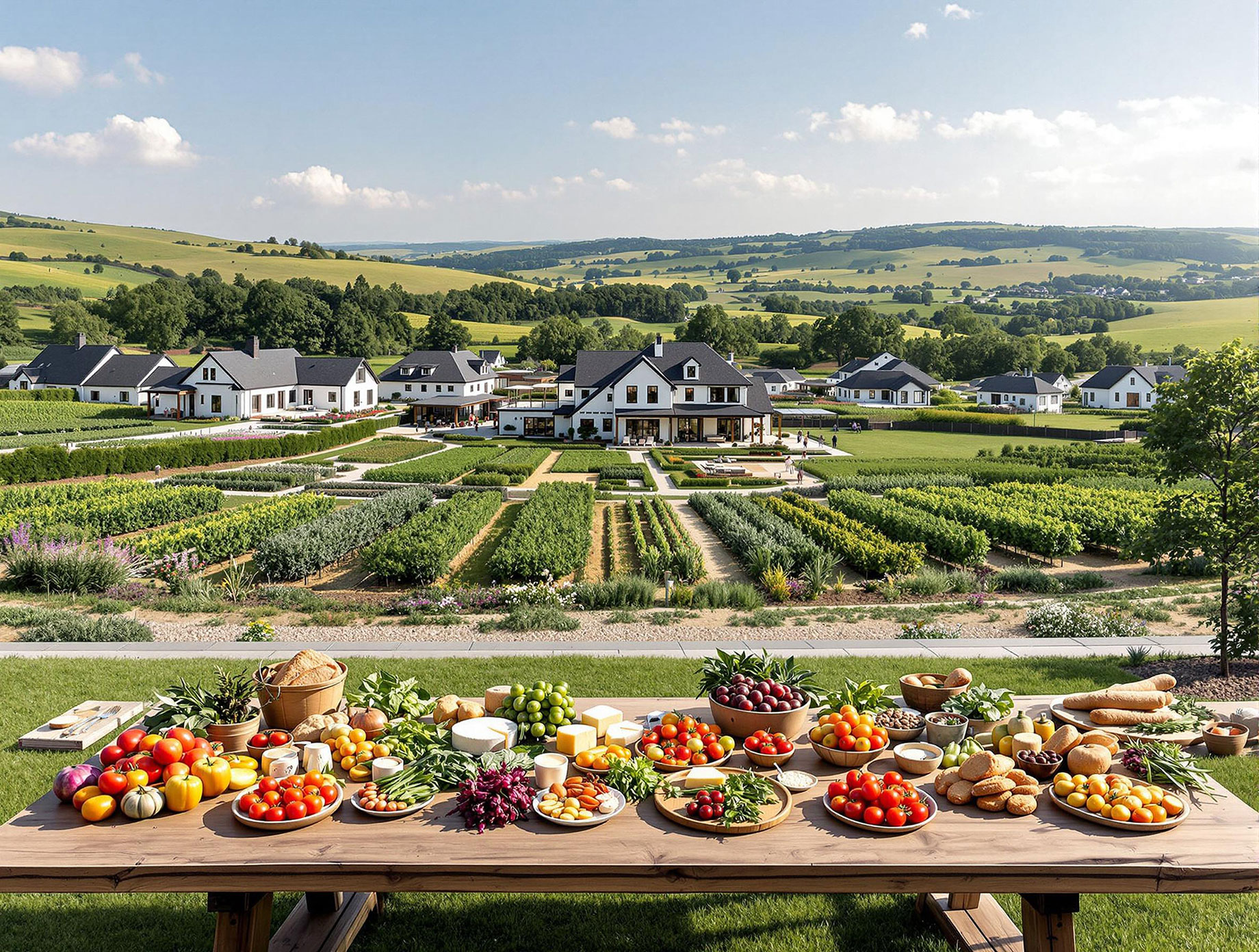
Remember when luxury real estate was all about marble everything, massive square footage, and that coveted zip code? Well, times are changing, folks. Today’s affluent homebuyers are increasingly asking, “Yes, but where does my food come from?” Enter the farm-to-table luxury community – where sustainability meets high-end living in what might be the most 2025 real estate trend ever.
Luxury Gets a Green Makeover
The definition of luxury has undergone a serious transformation in recent years. While no one’s turning down a gorgeous infinity pool or chef’s kitchen, today’s wealthy homebuyers are adding new must-haves to their checklists:
- Wellness features that promote healthy living
- Sustainable design and energy efficiency
- Authentic community connections
- Access to locally grown, organic food
This shift isn’t just hippie talk – it’s driven by affluent millennials hitting their peak earning years, health-conscious Gen Xers, and even boomers looking to reinvent retirement. After spending two years of pandemic life reassessing priorities, many wealthy buyers are seeking homes that offer more than just bragging rights – they want meaningful lifestyles.
As I scrolled through Harvest Green real estate listings last week, I noticed how the marketing emphasized the community farm access just as prominently as the luxury finishes. This perfectly illustrates how the market is evolving.
The Farm-to-Table Community Model
Farm-to-table communities aren’t entirely new – they draw inspiration from historical concepts like garden cities and agricultural estates. But today’s versions have elevated the concept to an art form.
Modern agricultural luxury communities typically feature:
- Working farms integrated into residential developments
- Community gardens where residents can grow their own produce
- Farm-to-table restaurants and farmers markets on-site
- Educational programs about sustainable agriculture
What makes this a luxury proposition? These communities command premium pricing – often 15-20% above comparable homes in traditional luxury developments. But residents get something priceless: guaranteed access to ultra-fresh produce, a connection to their food source, and the satisfaction of living their values while still enjoying high-end amenities.
Spotlight on Harvest Green: Agriculture Meets Affluence
Harvest Green, located about 30 miles southwest of Houston, has emerged as a standout example of this growing trend. This master-planned community was built around a 12-acre working farm that serves as both the literal and figurative heart of the neighborhood.
The Village Farm doesn’t just look pretty – it functions as a genuine agricultural operation producing vegetables, fruits, and herbs that go directly to community residents. Homeowners can opt into CSA (Community Supported Agriculture) shares, receiving weekly harvests grown literally down the street.
What separates Harvest Green from just another nice suburb with a farm aesthetic are the authentic agricultural touches. Residents can lease private garden plots, participate in seasonal harvests, and attend cooking classes using just-picked ingredients. Children grow up understanding where food comes from – something increasingly rare even among privileged families.
The homes themselves blend luxury with sustainability. Imagine high-end kitchen finishes alongside energy-efficient systems and spaces designed for storing and preparing fresh produce. Think modern farmhouse aesthetics with authentic touches like reclaimed wood and natural stone, not just design magazine imitations.
Beyond Harvest Green: A Growing Luxury Trend
This model is flourishing nationwide with communities like Serenbe near Atlanta and Rancho Mission Viejo in California leading the charge. Each puts its own regional spin on the concept – Serenbe emphasizes arts alongside agriculture, while Rancho Mission Viejo focuses on native habitat preservation.
Pricing varies dramatically by region. A $1.2 million property in Harvest Green might fetch $3 million in a comparable California community or $2.4 million outside Atlanta. But compared to traditional luxury developments in the same regions, agricultural communities typically command 10-30% premiums.
The Future of Farm-to-Table Luxury
As climate concerns grow, these communities may prove not just trendy but prescient. Developments integrating food production with luxury housing offer residents a measure of food security alongside prestige – a combination increasingly attractive to forward-thinking wealthy buyers.
Challenges remain in balancing the sometimes messy realities of agriculture with luxury expectations. Not everyone appreciates the occasional waft of compost or seasonal garden maintenance requirements. Successful communities strike a balance, keeping agricultural operations photogenic while still functional.
For luxury homebuyers tired of developments where “community” means little more than a shared gate code, farm-to-table communities offer something more nourishing – connections to neighbors, to the land, and to the food that sustains us. That might be the ultimate luxury in our disconnected age.